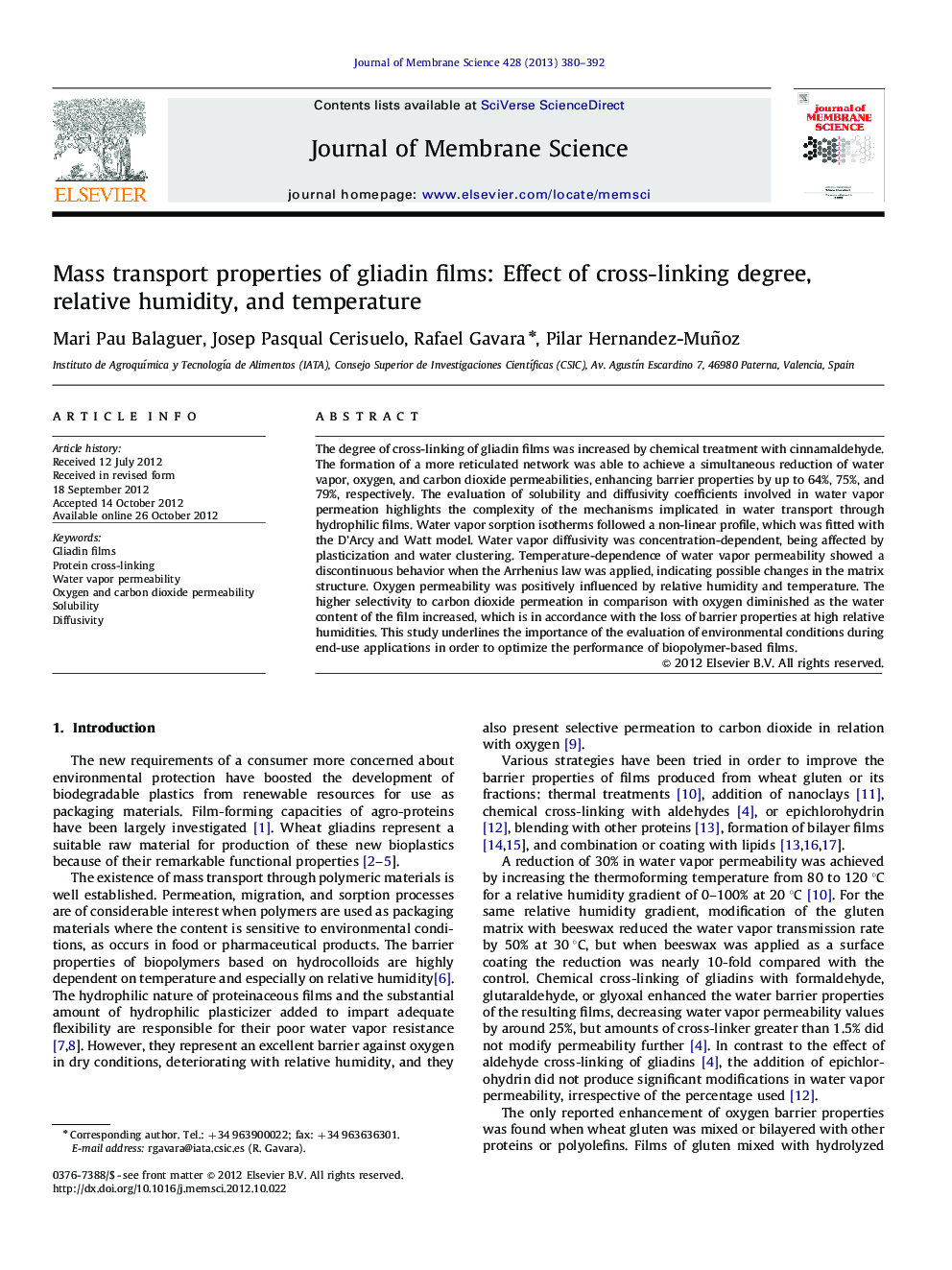| Article ID | Journal | Published Year | Pages | File Type |
|---|---|---|---|---|
| 634632 | Journal of Membrane Science | 2013 | 13 Pages |
The degree of cross-linking of gliadin films was increased by chemical treatment with cinnamaldehyde. The formation of a more reticulated network was able to achieve a simultaneous reduction of water vapor, oxygen, and carbon dioxide permeabilities, enhancing barrier properties by up to 64%, 75%, and 79%, respectively. The evaluation of solubility and diffusivity coefficients involved in water vapor permeation highlights the complexity of the mechanisms implicated in water transport through hydrophilic films. Water vapor sorption isotherms followed a non-linear profile, which was fitted with the D’Arcy and Watt model. Water vapor diffusivity was concentration-dependent, being affected by plasticization and water clustering. Temperature-dependence of water vapor permeability showed a discontinuous behavior when the Arrhenius law was applied, indicating possible changes in the matrix structure. Oxygen permeability was positively influenced by relative humidity and temperature. The higher selectivity to carbon dioxide permeation in comparison with oxygen diminished as the water content of the film increased, which is in accordance with the loss of barrier properties at high relative humidities. This study underlines the importance of the evaluation of environmental conditions during end-use applications in order to optimize the performance of biopolymer-based films.
► Cross-linking with cinnamaldehyde improved barrier properties of gliadin films. ► Water vapor, oxygen, and carbon dioxide transport reduced especially at low RH. ► Water vapor diffusivity affected by concentration, plasticization, and clustering. ► The carbon dioxide/oxygen permselectivity diminished as RH increased.
